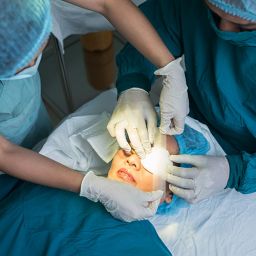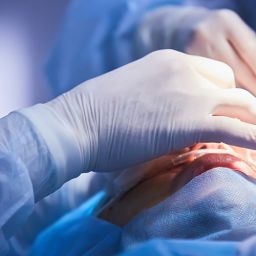
Corneal Transplant – Keratoplasty
The use of human tissue corneas is one of the first successful allografts used in corneal transplant surgery. Corneal transplantation involves replacing diseased cornea with a new. The majority of corneal transplants are performed annually in the United States. These corneal transplantations are common across the world. Corneal transplantation is usually indicated to restore vision when the disease cannot be treated non-invasively. Reconstructive corneal transplant surgery purposes to improve the integrity of corneas that have been damaged by the loss of stroma due to thinning diseases. They are also performed for therapeutic purposes, such as recalcitrant keratitis that means corneal ulcer are resistant to medical therapy.
Success Associated with Keratoplasty
Keratoplasty is a highly successful technique; it is the most commonly performed method of corneal transplantation. More than 90% of all corneal transplants in the US are performed using this procedure. Keratoplasty is performed for central deep opacities in the keratoconus, opacities in the visual axis, and disorders affecting the corneal endothelium resulting in edema and loss of corneal clarity, as well as when visual acuity is reduced or limited with spectacles and contact lens fittings. The edema, scarring, opacity, or keratoconus may be the result of visual loss in the corneal. Keratoplasty can produce excellent visual acuity but it is more prone to serious intraocular complications and a higher rate of rejection compared with the lamellar procedure. The success of the affecting factor of corneal transplantation includes coexisting ocular disease, such as glaucoma or dry eyes, corneal pathology, quality of donor material, type of keratoplasty, surgical techniques and postoperative management of complications. Many patients are benefited by the Eye Bank Association of America which aims to procure, prepare, and distributes donor corneal tissue for transplantation.
Procedure
Keratoplasty consists of homograft’s (allografts) of tissue used for transplantation, because of the absence of blood vessels, corneal homograft is considered immunologically privileged tissue. The donor’s cornea is removed from the eyeball and stored at 4°C in a special tissue culture medium with antibiotics; the entire cornea consists of 2mm to 3mm of the sclera. After 3-5 days of procurement, it is imperative to use a fresh specimen so that the endothelium is viable. The function of the metabolic of the endothelium is responsible for corneal graft clarity. Before transplantation, the donor endothelium is assessed and the cornea is examined for artifacts and folds (stromal swelling). The new developments of surgical techniques in sutures, instruments, and microscopes, as well as changes in surgical techniques, have significantly improved the prognosis of patients requiring corneal transplantation.
In keratoplasty a flickering ring is sutured to the sclera for support to prevent the eyeball from collapsing when the anterior chamber is entered. The center of the diseased recipient cornea is then marketed for centration of the trephine. For most of the pathology, the diameter of the trephine must be sufficient to remove. In most of the cases on average, the donor cornea diameter is 7.5mm and for the recipient is 8.0mm. This is preferred to avoid postoperative complications. A Barron suction trephine is centered over the mark and suction is applied. The wound is inspected and the anterior is entered with a sharp blade after the trephine is removed. The recipient cornea is removed with corneal scissors and the anterior chamber is reinflated with viscoelastic material to maintain the integrity of the eyeball.
The corneal endothelium is kept intact as possible, a trephine is then used to punch the donor material from the endothelial side. The graft is then placed over the recipient’s opening. Viscous material is sprayed on the pupillary area to support the graft and prevent endothelial damage. To avoid postoperative complications, such as wound leaks, the graft is sutured into the host and securely attached. Recent reports have demonstrated some advantages in using a femtosecond laser to cut donor and recipient corneas, namely less induced astigmatism and faster visual recovery.
Precautions
In keratoplasty, most cases are done on an outpatient basis. This means it may be performed with local or general anesthesia. Postoperative care consists of lubrication and application of topical antibiotics and steroids. It is imperative to watch for signs of graft thickening, which may be related to rejection, hypotony, or graft failure. The visual rehabilitation of the corneal graft suture status is extremely important. The continuous suture is well tolerated and may remain in place for 12-24 months. Loose sutures must be removed as it can cause inflammation, infection, and irritation. Prolapse of the iris and/or lens after the anterior chamber is opened can cause significant intraocular complications include defective donor material that may be infected. A shallow anterior chamber or low intraocular pressure may be the result of a wound leak, which should be repaired by additional suturing. The same is true of wound dehiscence which can be restored to maintain graft integrity. To prevent loss of vision postoperatively, early diagnosis and treatment of complications are important. Patients should report changes in visual acuity that persist beyond 24 hours.
Conclusion
Lamellar keratoplasty is a more time-consuming and technique-sensitive operation that removes only the outer layers of the stroma, but not the Descemet’s membrane and endothelium. In this procedure, a partial-thickness incision is made, followed by dissection of the diseased cornea, which is replaced with either preserved or fresh donor tissue.
Overall, keratoplasty has many advantages such as eliminating the risk of suture related complications. It allows quick rehabilitation of the graft with technological advancement to examine specific layers of the cornea. It is a safer procedure compared to others as the deeper stroma doesn’t need to be replaced. As per clinical studies conducted, majority of the patients who underwent the procedure came out with good results.
















